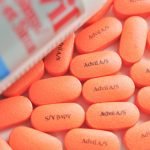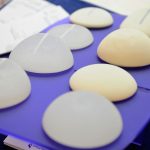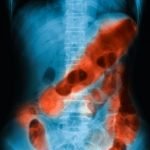Learning from the Past: One Eye on the Stairs and One Eye on the Future
David Schleich, PhD
As the formation of the naturopathic profession accelerates in North America, it is useful to reflect on events and personalities that have been part of that history. The well-known admonition that if we don’t learn from the past we are more likely to repeat its problems or errors is without doubt true with regard to professional formation for NDs. In America, many higher education scholars predict that new naturopathic programs in various forms will emerge in the next decade. The most likely form is a program within an existing university or other post-secondary educational institution. This has been true, for example, at NUHS and at Bridgeport in the last decade. SCNM and BINM are likely the last standalone naturopathic colleges in North America to be established in that mode.
Another form could be the often-discussed notion of “bridge programs,” of special interest to the chiropractic profession but also attracting attention from other health care professionals. The stirring of interest for such a program in Idaho in recent months, as another example, calls attention to the need for a strategy that can invite and support a high-quality program aligned with the rigor and standards of the CNME rather than affiliation with rival groups whose standards appear suspect. As well, the two cohorts who have already graduated from John Thomas College in St. Louis with state-authorized degrees called “naturopathic medical doctor” or “NMD” are another case in point. What is encouraging, though, is that this latter group is very eager to understand and to create their program in concert with potential new CNME standards for bridge programming.
We have in our history one tale of bruising and woe that warns us about being alert to the emergence of rival interests for new programs in naturopathic medicine. While we would want them to be in the CNME family, we must also be prepared to do the work necessary to assure that flight path as demand for natural medicine accelerates in North America and beyond. An event 20 years ago in Ontario, Canada, is worth noting. Certainly, in 2009, our agencies, colleges and networks are much stronger than they were back then; however, the same detractors are afoot and it is worth our being vigilant.
The “Ontario Incident”
In Canada, about two decades back, the fragile Ontario College of Naturopathic Medicine, predecessor to the current CCNM, had a very bumpy path for several years through that process of aligning with the right accrediting body and the right professional groups. As the 1980s closed, the American Naturopathic Medical Association (ANMA), led by Donald Hayhurst and others of Nevada, attempted to assimilate the little Canadian school into its sphere. Sadly, leaders in the Hayhurst camp and at OCNM itself both contributed to the messy, complex transition that was in play as the Canadian school tried to move into the mainstream of naturopathic professional development. At the time, the issue that seemed to rankle the executive of the Ontario Naturopathic Association most of all was that the executive director of the Ontario school, Dr. S. Hambly, had applied for accreditation with the ANMA-endorsed American Naturopathic Medical Certification and Accreditation Board (ANMCAB) at the same time as his administration was quietly communicating for candidacy with the profession’s bona fide accrediting body, the CNME. The ANMCAB agency was directly in conflict with the CNME, the accrediting body spawned by the AANP and recognized by the U.S. Department of Education. Neither accrediting body knew that the school was seeking accreditation from both at the same time.
This all occurred during the spring and summer of 1989. During this period, the board and management staff of OCNM prepared a self-study document (OCNM Self-Study, ANMCAB, August 1989), which resulted in an October site visit by the ANMCAB. The formal application for accreditation had been dated Jan. 5, 1989 (ANMCAB, Application for Accreditation, January 5, 1989). The documentation for accreditation by the ANMCAB was a significantly smaller, less rigorous and less comprehensive study than that required by the CNME for the same purposes. For example, its financial section required a simple profit and loss statement rather than a full budget analysis, including capital and operational sections with full five-year projections and consideration of operating ratios. As well, its review of operational systems consisted only of a listing of positions rather than a more thorough analysis of decision-making in such key areas as curriculum development and review, learning outcomes in clinical education and operating standards in patient care in the teaching clinic.
In any case, while Dr. Hambly and colleagues pursued a parallel accreditation process with the CNME, a group of NDs called the “Requisitionists,” led by Dr. Pamela Snider (who lived and practiced in Canada at the time) and Dr. Daria Love (an early graduate of OCNM and formerly a Doctor of Chiropractic), attempted to clarify the school’s intentions and to make transparent its current actions. Certainly, the Ontario Naturopathic Association (ONA; now called the Ontario Association of Naturopathic Doctors, or OAND) at the time had no knowledge of this double application. An application for “communication status” with the CNME had been sent to Seattle by Dr. A. Manolis, the director of research at OCNM, on March 15, 1989. The chair of the commission on accreditation for the CNME, Kathleen Shelly, sent a letter to OCNM on Oct. 7, 1989 (coincidentally the very day of the site visit by the ANMCAB) accepting the application and indicating that the next step in the process was for OCNM to begin its self-study process according to the guidelines published in the CNME’s Educational Standards and Accreditation Procedures (ESAP). OCNM had been accepted in the preliminary status of “communicating for candidacy” at the Commission meeting of the CNME on May 20, 1989. OCNM was thus eligible for communication status based on new regulations adopted after 1986 related to foreign schools. This schedule was later brought forward as events at OCNM heated up.
The Requisitionists began presenting affidavits of their concerns to Dr. Hambly as well as to the board of OCNM. Cecil Baxter, executive director of the CNME, confirmed in a Nov. 21, 1989 letter that the self-study could be sent to the Commission and its evaluators by mid-February, 1990 with a target date of late April 1990 for a visit by an evaluation committee. Thus, a May 1990 decision by the CNME for OCNM candidacy was entirely possible.
The data and documents available indicate that the OCNM board could not have been unaware of the dual stream of accreditation effort. First, the self-study report was endorsed by the executive of the OCNM board. Second, Dr. Allen Bell, a member of the OCNM board, was present at the Nov. 4 meeting of the CNME in Oregon and reference to his presence is made in the minutes of that CNME meeting (Minutes, CNME, Nov. 4, 1989).
As well, Dr. Hambly, notwithstanding his overtures to the ANMA and meetings with its representatives, was well informed of the profession’s distaste for any affiliation with the ANMCAB. On Nov. 25, 1989, for example, Dr. K.D. Farnsworth, president of the Association of Naturopathic Physicians of British Columbia, had written to Dr. Hambly, stating: “If OCNM accepts accreditation from the ANMCAB, which does not meet the standards set in B.C., this could jeopardize the status of those doctors graduating from OCNM and seeking licensure in B.C.” (Letter to S. Hambly from K. Farnsworth, 1989)
As well, Dr. John Bender, chairman of the Board of Directors of Drugless Therapy – Naturopathy (BDDT-N), the regulatory board in the province of Ontario at the time, wrote to Drs. Farquharson and Hambly on Dec, 11, 1989, explaining: “We believe the CNME is the only current accrediting agency in the U.S. or Canada and would encourage you to pursue communicating status with them. We believe communicating status with the CNME to be of extreme importance in upholding the high standards of OCNM.” (Letter to S. Hambly, from John W. Bender, 1989)
In that same month, Dr. Carlo Calabrese, president of the CNME, wrote to Dr. Hambly explaining a request for information about the status of OCNM’s application for candidacy and ultimately, accreditation. Dr. Calabrese was informing Dr. Hambly about an inquiry (from one of the Requisitionists) that the CNME was not going to respond to because of confidentiality.
“I asked your permission before releasing any of our communications. You informed me that you would prefer not to have that material released. I will therefore honor your preference and not release the documents. I have informed the petitioner for the documents that Ontario College’s application for evaluation for Communicating status is active and that the Council’s Commission on Accreditation is anticipating receipt of your self-study in May 1990. I would expect that the evaluation will be complete and a decision rendered at the Commission meeting in November 1990.” (Letter to S. Hambly, from C. Calabrese, Dec. 16, 1989)
Clearly, there were two accreditation pathways being pursued. The Ontario and national professional associations, once they became aware of OCNM’s objective of achieving ANMCAB accreditation, increasingly opposed OCNM’s actions with respect not only to accreditation, but also to the fight against deregulation by the provincial government, a process that was in full swing during this turbulent period. That the profession was witnessing an attempt to deregulate naturopathic medicine in the Province of Ontario and that the only school in Canada at the time was giving very mixed messages about the direction it was proposing to take the profession underscored the serious threat to naturopathic medicine in Canada in those days. What it boiled down to was that by 1989, just over ten years after OCNM was launched, a serious schism had developed and was growing between the only college training new naturopathic doctors for entry to practice in Canada and the profession it had been founded to serve. It is no wonder that the majority of students from British Columbia and a number from Ontario went to NCNM or Bastyr at that time in order to avoid the confusion.
Continuing Confusion
At any rate, communication continued to deteriorate among the chairman of the governing board of OCNM, Dr. Bell, Dr. Hambly, senior administrator at the college, and the ONA. The ONA executive began a series of communications in late autumn 1989 to document its concerns and to turn the conflict around. Very rapidly, a number of issues arose that blocked healthy interaction among the college board of directors, the BDDT-N and the ONA. First, the ONA took issue with the OCNM board’s refusal to provide members of a group called the Institute for Naturopathic Education and Research (INER) with copies of the bylaws and membership list of INER itself. Drs. Snider and Tunstall, concerned that OCNM was opting to ally itself with the ANMA and not with the AANP and the CNME, requested a membership list so they could approach the members of the nonprofit organization behind the school to lobby against this direction. Dr. Hambly refused to provide this information to them as well as to other concerned college board members, ONA members and BDDT-N registrants. These NDs, according to Dr. Snider, were “alarmed about the membership in INER (the membership-based ‘charitable organization’ whose charter from the provincial government enabled the school to operate) being compromised by “parachuting in” members of the ANMA to “influence the Board’s composition and governance practices” (Interview, Dr. Snider, Feb. 4, 2002).
Next, the ONA was experiencing “non-cooperation” with OCNM on an increasing basis. In their Nov. 22, 1989 document, “Summary of Issues,” the ONA addressed its concerns directly to Dr. Bell: “OCNM initiated a legal action (constitutional challenge) with the Ontario government without consulting with the ONA and without working in consolidation with their ongoing efforts. We cannot afford the arrogance of one part of the profession doing it their way and to hell with what anyone else thinks! ‘United we stand, divided we fall.’ This was an inappropriate,ill-timed act and has injured our image and efforts with the government. Education is the mandate of naturopathic schools. Although the school can and is encouraged to assist in the political process, consultation with the provincial association must precede and be agreed upon before public or government actions of magnitude are taken.” (Summary of Issues, 1989, p. 1)
The ONA president also summarized in a letter to Drs. Farquharson and Hambly the Ontario profession’s alarm at OCNM’s “unilateral actions” with respect to the CNME. The allegation was that OCNM had been “defaming the CNME” in support of the ANMA: “The CNA and every provincial association in Canada support the CNME. It represents the highest level of excellence in naturopathic education that our profession has ever evolved, and we are proud of it. We have worked diligently to advance its stature with the United States government for years. Recently we were obliged to write a letter to the United States Department of Education stating the absolute commitment of the Canadian Naturopathic Association to the CNME. We were forced to apologize for the embarrassment of the OCNM Board’s letter to the Department defaming the CNME caused us. OCNM is unauthorized to publicly undermine the CNME without agreement of the Canadian naturopathic community. Your letter damaged the naturopathic profession in the United States and potentially in Canada. Although it may ultimately be to our advantage to have our own educational accrediting body in Canada, we have not yet matured to that reality. CNME in no way means we are governed like puppets from the United States. We endorse this council’s standards as it forwards the entire profession of naturopathy educationally and politically.” (Letter to Dr. S. Hambly from Dr. P. Wales, 1989)
Indeed, involvement with the ANMA triggered mounting retaliation against OCNM by members of the profession. Drs. Snider and Tunstall eventually initiated a legal action, supported by Robert Schad, who later became chair of the new CCNM board, and the ONA to remove the OCNM board and replace it with a new board more in tune with the wishes of the profession. The details of that process are presented in more detail next. However, the ONA established a “line in the sand” in its letter to Dr. Bell concerning OCNM’s relationship with the ANMA mid-January, 1990, and copied to Drs. Farquharson and Hambly citations from which capture the growing enmity between the two organizations.
“Regarding the American Naturopathic Medical Association, it is of interest to us, Dr. Bell, that in your letter of March 9th to the United States Department of Education, you fear a monopolistic rule of Canadian Naturopathic education by the CNME, yet paradoxically OCNM invites numbers of United States members of the ANMA to be members of INER, thereby having a vote and influence over Canadian naturopathic education. And, though a few individuals of the ANMA are well qualified, most of their association are clearly not licensable by provincial or state standards, not having attended a four-year institution in naturopathic medicine nor having graduated from an acceptable accelerated program. Some practice with correspondence degree doctorates and many practice with degrees obtained just by asking for it [sic]. They advertise that anyone with an accredited medical arts degree of some kind can be a member of the ANMA and call themselves naturopathic doctors, just by stating that they practice alternative medicine or some sort and paying a fee for the degree. Also, we seriously question the wisdom of OCNM’s solicitation for so-called accreditation with the ANMCAB, which purports to accredit colleges and institutions, yet has no government recognition of any kind in any state and has very minimal standards. Is this who we want to invite into our schools and associations? If the college pursues the course it is on, it almost certainly will cause deregulation in Ontario. The other provincial goverments [sic] are looking at the outcome of the Ontario situation before making moves for or against us. OCNM’s involvement with the ANMA undermines the professional standards naturopathy has worked so laboriously [sic] to achieve. If we do not embrace the highest standards we can achieve, we will at best be mediocre and at worst dissolve as a profession, replaced by those with higher standards and greater professionalism. Embracing the ANMA is not in the best interests of the Canadian Naturopathic profession and is not in the best interests of your students, reducing them at once to the level of diploma mill graduates, and they will be viewed as such by the Canadian and United States governments and by other professions. We will not tolerate OCNM’s involvement with this organization.” (Letter to Dr. Bell from the Executive of the ONA, January 16, 1990)
The ANMA and CNME Today
Eventually Hayhurst’s organization would become very active in national naturopathic politics. This Las Vegas, Nevada-based group then and now has a comprehensive lobby at the State and federal levels, advocating for the deregulation of the naturopathic profession. Their position is that the non-invasive therapies of the ND constitute no threat to the American public and thus there is no need for regulation. The ANMA organization “accredits and certifies” thousands of “holistic practitioners” and endorses doctoral and master’s level programs in naturopathy, nutrition, energy medicine, psychic counseling and a number of parapsychologies and helping profession designations. The schools that train these individuals are principally correspondence organizations with no or marginal clinical training. The ANMA operates in most American states. Its website includes attacks on the CNME, various state and provincial professional associations, and on the accredited naturopathic colleges, including the Canadian college.
The CNME is recognized by the U.S. Secretary of Education as the national accrediting agency for programs leading to the Doctor of Naturopathy or Doctor of Naturopathic Medicine (ND or NMD) degree. The CNME considers only four-year, in-residence, doctoral-level colleges and programs for accreditation. It does not provide information on correspondence schools or other programs that do not prepare students to become licensed naturopathic physicians. The purpose of the U.S. Secretary’s recognition process is to ensure that accrediting agencies like the CNME are reliable authorities as to the quality of education or training offered by the college or programs they accredit. The Council consists of a representative from each accredited and candidate college or program, plus five naturopathic physicians and three representatives of the public. The Council elects its members based on criteria in its written policies.
The ANMA, on the other hand, is not linked to any external body, nor governed by a regulatory framework. It embodies the principle in its operations of “laissez-faire” and “free enterprise.” The ANMA contends that its accrediting regimen is “ample and sufficient to guarantee the public safety.” However, no state or provincial licensing group currently recognizes an ANMA-certified practitioner unless that practitioner is also licensed through a bona fide state or provincial authority. Nevertheless, the ANMA has been tenacious in lobbying to prevent the expansion of regulation in each state and provincial legislature. Its membership base is many times larger than that of the “legitimate bodies,” the AANP and CNA.
As we move forward growing our profession, awareness of those who would challenge our goals and our vision can be sharpened by knowing what has happened in the past. The Ontario incident spanned half a decade before it was all sorted out. Now the profession in Canada is thriving, CCNM is a major contributor to research and to a growing cadre of well trained naturopathic doctors, and Ontario itself, once in danger of being deregulated, is the largest jurisdiction of licensed naturopathic doctors in the world. As I have been heard to say more than once, we need to keep one eye on the future always (knowing where we want to get to) and one eye on the stairs in front of us as we climb to that future.
Next month, we will have a closer look at one of the key tools in our repertoire for professional formation, from the educational perspective: the AANMC.
 David Schleich, PhD is president and CEO of NCNM, former president of Truestar Health, and former CEO and president of CCNM, where he served from 1996 to 2003. Other previous posts have included appointments as vice president academic of Niagara College, and administrative and teaching positions at St. Lawrence College, Swinburne University (Australia) and the University of Alberta. His academic credentials have been earned from the University of Western Ontario (BA), the University of Alberta (MA), Queen’s University (BEd) and the University of Toronto (PhD).
David Schleich, PhD is president and CEO of NCNM, former president of Truestar Health, and former CEO and president of CCNM, where he served from 1996 to 2003. Other previous posts have included appointments as vice president academic of Niagara College, and administrative and teaching positions at St. Lawrence College, Swinburne University (Australia) and the University of Alberta. His academic credentials have been earned from the University of Western Ontario (BA), the University of Alberta (MA), Queen’s University (BEd) and the University of Toronto (PhD).
References
Documents referenced in this article derive from unpublished archives of the OAND, made available to me graciously by Drs. P. Wales and D. Love:
OCNM Self-Study, ANMCAB, August 1989.
ANMCAB Application for Accreditation, January 5, 1989.
Eligibility Requirements for Accreditation by the CNME, The Council on Naturopathic Medical Education Handbook, Educational Standards and Accreditation Procedures, the Council on Naturopathic Medical Education, June 1991.
Letter to S. Hambly from K. Farnsworth, Nov.25, 1989.
Letter to S. Hambly from John W. Bender, Dec. 11, 1989.
Letter to S. Hambly from C. Calabrese, Dec. 16, 1989.
Summary of Issues, ONA, Nov.22, 1989.
Letter to Dr. S. Hambly from Dr. P. Wales. Nov. 30, 1989.
Letter to Dr. Bell from the executive of the ONA, Jan. 16, 1990.










